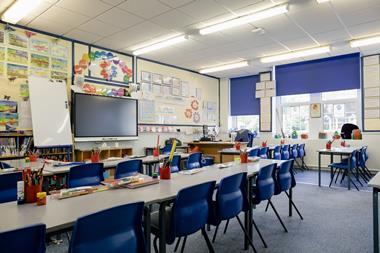"Formerly, when religion was strong and science weak, men mistook magic for medicine; now, when science is strong and religion weak, men mistake medicine for magic."
Thomas Szasz 1920-: The Second Sin (1973) 'Science and Scientism' From the Little Oxford Dictionary of Quotations
It is a difficult environment for big pharmaceutical companies at the moment. They are excoriated by social activists and sued by governments.
Even investors have been disenchanted: 'Competition, soaring research and development costs, shifting business models and political meddling combine to make drug stocks a riskier place to invest,' was the comment in US investment newsletter, the Motley Fool.
Although consolidation has created giant companies with huge research and development (R&D) facilities, 'world class clinical capabilities are no longer sufficient to meet shareholders' expectations,' according to PriceWaterhouseCoopers' European valuation and strategy team. 'In recent years, the winners and losers in the industry have been distinguished as much by marketing muscle as scientific innovation.' And, according to PwC, the new emphasis on marketing means increased risk, because the launch of a lifestyle drug supported by direct advertising can cost hundreds of millions of dollars, most of it spent before anyone pays for a prescription.
The fundamentals which drive global pharmaceutical companies are the need to maintain a pipeline of new products and the ability to maintain income through differential pricing. In the background are pressures on the costs of R&D and marketing and contraction across in the number of new chemical entities, partly as a result of the investment in new technologies taking longer than expected to deliver new medicines.
Thanks to the market's confidence about its stream of new products, AstraZeneca, one of three large UK pharmaceutical companies, has been outperforming its competitors and fellow constituents of the FTSE100, GlaxoSmithKline and Shire Pharmaceuticals. AstraZeneca has been trading at around 26 times historic earnings and has still been collecting new buy recommendations.
The pipeline
In its attempts to anticipate the future, the stock market wants to know that the company can keep growing, even when the patents on best-selling drugs expire and generic copies become legal. It takes eight to ten years to get a new drug to market, while the patent lasts for 20 years. Effectively then, the company's exclusive rights are protected for much less time than this.
In 2003, AstraZeneca had to absorb the loss of $2.6bn, ahead of the expiry of patents for three important drugs, including a 49% fall in what had been the world's largest selling gastro-intestinal drug and its biggest revenue generator in 2002, Losec/Prilosec. However, it had 40 projects that had advanced beyond clinical trials into the approvals process.
Having got a new drug to market, the company naturally wants to maximise its return over the short period that its rights are protected, but drug pricing has become an explosive issue. Differential pricing of drugs across the world has long been a feature of the pharmaceutical industry, and AstraZeneca believes it should continue, but today it is not just in the third world that there is growing concern about the cost of prescription drugs.
In the West, the medical needs of growing numbers of older people are putting the budgets of health care providers under pressure. Pricing is unregulated in the highly competitive US market, which represents 46% of AstraZeneca's sales, but the cost of medicines has become an issue in the presidential election campaign.
Even state health programmes have resorted to re-importing lower priced drugs from Canada although this is actually illegal. Internet sites and spam e-mails offer cheaper prescription drugs, often with few safeguards.
When it comes to the developing world, campaigners like the charity Oxfam want poor countries to be able to by-pass international agreements on patent enforcement, sourcing drugs as best they can without having to buy branded products. 'The cost of medicines is already a major cause of poverty and suffering,' says Oxfam.
Risks
AstraZeneca's annual report is combined with its form 20-F filing for the US Securities and Exchange Commission (SEC) and so is more descriptive of risk factors than the usual UK annual report. It lists and describes the following:
- loss or expiry of patents, marketing exclusivity or trade marks (IP)
- impact of fluctuations in exchange rates
- failure of R&D to yield commercially successful new products
- competition, price controls and price fluctuations
- taxation
- substantial product liability claims
- reliance on third parties for material and services
- delay to new product launches
- difficulties obtaining regulatory approvals for new products
- failure to observe regulatory oversight
- performance of new products
- environmental liabilities
- forward looking statements.
More information on the company's management of financial risks, such as foreign exchange, is set out in the financial review, while other risks, mainly related to intellectual property disputes and pricing, come under the heading of contingent liabilities. The company comments, 'As is true for most, if not all, major prescription pharmaceutical companies operating in the US, AstraZeneca is currently involved in multiple additional US federal and state criminal and civil investigations into drug marketing and pricing practices.' Only a few of the risks listed are the province of classic risk management.
Patent and trade mark risk, for example, is the responsibility of the company's large global intellectual property function. Its members report to the general council and have strong links to research and development.
Risk services manager Alex Hindson says that the risk factors relevant to investors do not necessarily completely overlap those that get reported to the board. Yet, many are amenable to a risk management approach. Starting in September 2002, AstraZeneca began introducing integrated risk management (IRM) to establish a unified approach to risk management across the company.
The aim, Hindson explains, is that the business should understand the key risks it faces, especially cross-functional exposures, and embed risk management in its business processes, but that the framework should be implemented in a 'low profile, high impact way.' The team set some key success criteria. It then divided the project into different streams and tracked each element in turn. These streams were:
1 COMMUNICATION STRATEGY
2 RISK MANAGEMENT TOOLS/TECHNIQUES
3 WEBSITE
4 RISK LANGUAGE
5 PILOT PROJECTS TO WHICH RISK MANAGEMENT FRAMEWORK APPLIED
Says Hindson: "To measure success, we tracked progress against delivery, using simple traffic light systems (red/amber/green). We got the internal auditor on our team to run this, as he was sufficiently independent and challenging to make it work. We then reported against these criteria once a year to our senior executive team."
By November 2003, the project had achieved its principal objectives.
For example, all global product teams had risk management plans in place, and the product portfolio management committee had adopted the integrated risk management framework in its review of product risks. In operations the framework has been applied to capital project management and to specific risk areas, such as fire and supply chain risk management.
At the heart of AstraZeneca's risk management approach, overseeing the integrated risk management framework, is the risk advisory group (RAG).
Headed by CFO Jonathan Symonds, it has as its members senior representatives from each of the functional areas, the risk director, Neil Campbell, and acting as secretary, Hindson. Its primary role is to collate business risk profiles and present comprehensive risk reports to the board.
Insurable risk
About half of Hindson's time, he says, is spent on insurable risk, with a lot of attention to product liability and contingent business interruption.
In the last two years, AstraZeneca has developed a number of risk financing strategies, particularly in light of the insurance market's fading appetite for pharmaceutical risks. The group now has significantly higher retentions, self-insured through captives. It focuses on key risks and buys less cover.
A sophisticated, six year risk financing programme, effected in 2003 using a call option with Swiss Re, provides an open architecture platform for reducing the volatility of uninsured events and the financing of new and traditional risks. It ring fences old liabilities and provides cover against an exceptional range of business interruption risks.
A new industry mutual, Pharmaceutical Insurance Ltd (PHIL) is another element of the risk financing strategy. Bermuda based PHIL provides up to $150m cover excess of $50m for property damage and business interruption.
AstraZeneca and six other major pharmaceutical companies have put up $500,000 in capital each to get the new company off the ground. Extensive modelling of catastrophe risks and decision tree analysis enabled the risk management team to demonstrate the benefits of this commitment.
Reputation
Reputation is an interface between fundamental business risks, such as the product portfolio, and risks that arise as a consequence of doing business, such as intellectual property protection, product liability or supply chain failure. Symonds says, "You read regularly about companies that have lost value through failing to manage some aspect that affects their reputation. These aspects can be far more important to the market than decisions that directly affect a company's profits."
Hindson believes that maintaining society's trust and confidence is essential to the company's 'licence to operate' and creation of sustained shareholder value. "It is not about a one-off incident or an unfortunate accident but multiple failures, three or four things that get into the media, which start looking like bad management."
Risk as opportunity as well as threat is a common theme running through AstraZeneca's integrated risk management. As Symonds says, "Risk is not something to be avoided. We make profit from taking risks. We must find the right balance between risk and reward. This is the essence of good management." Lee Coppack is a freelance writer and editor of Strategic Risk's sister publication, Catastrophe Risk Management, E-mail: lee.coppack@catrisk.net.
ASTRAZENECA VITAL SIGNS 2003
Group turnover: $18.8bn
Operating costs: $14.9bn
Pre-tax profit: $4.2bn
Net book asset value: $13.3bn
Market capitalisation: $80bn
THE TEAM
AstraZeneca's risk and insurance services team consists of nine people, including three support staff. All the professional staff have technical or scientific backgrounds, and this has clearly influenced their approach to risk management. Alex Hindson, the risk services manager, is a graduate in chemical engineering, with key skills in risk auditing modelling and analysis. "We are a scientific company and we are systematic in the way we tackle things." The team was judged the Strategic Risk risk management team of 2004.



















